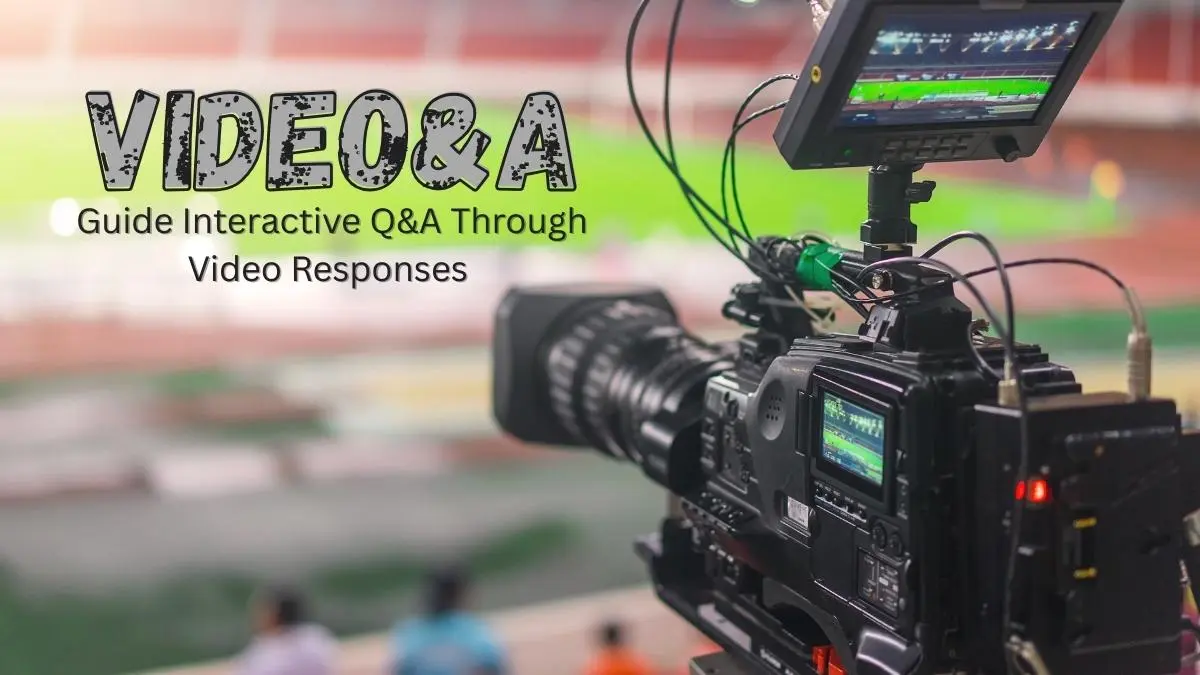In today’s fast-changing digital world, communication formats are evolving rapidly to meet modern user preferences. One of the most exciting innovations is Video&A (short for Video and Answers). Unlike traditional Q&A platforms that rely only on text, the interactive Q&A format enables people to ask and answer questions through video, making interactions more personal, engaging, and authentic.
What Is Video&A?
Video&A is an interactive video-powered question-and-answer format. Users can submit questions in text or video, and receive short, engaging video responses in return. This approach bridges the gap between written communication and live conversations, offering a dynamic and memorable experience.
- Clarity: Tone, gestures, and visuals reduce misunderstandings.
- Engagement: Viewers feel a stronger connection when they see and hear real people.
- Authenticity: Video conveys trust and transparency more effectively than text alone.
Why Video&A Matters in the Digital Age
The demand for visual-first, interactive communication is at an all-time high. Platforms like TikTok, Instagram Reels, and YouTube Shorts have proven that short-form video is the preferred medium for digital audiences. Traditional Q&A forums, FAQs, or chatbots often feel impersonal and lack emotional intelligence. An Interactive Q&A format solves this problem by allowing users to connect with real human expressions, even in remote settings.
Key Benefits
- Better User Experience: Video answers are easier to consume than long text paragraphs.
- Increased Trust: Seeing a real person respond builds credibility.
- Inclusive Communication: Subtitles, translations, and visuals make video answers accessible worldwide.
- Stronger Retention: People remember video-based explanations more than text responses.
Real-World Applications of Video&A
One of the reasons behind the rapid adoption of the interactive Q&A format is its versatility across industries. Let’s explore where it is making the biggest impact:
1. Education & E-Learning
Teachers and trainers are using an interactive Q&A format to explain complex subjects. Instead of just providing text-based answers, educators can share step-by-step video explanations that help students understand the process.
- Makes lessons interactive and engaging.
- Supports personalized learning for students needing extra help.
- Helps remote learners feel more connected.
2. Events, Webinars & Conferences
Speakers and event organizers often face an overwhelming number of questions. Traditional text-based Q&As don’t capture the full interaction. Video&A allows hosts to answer questions asynchronously, ensuring no query is left out.
- Audiences feel valued and included.
- Answers can be shared after the event for continued engagement.
3. Social Media & Influencer Engagement
Influencers thrive on personal connection. Responding only through text comments can feel robotic. An interactive Q&A format lets influencers reply with authentic video clips, strengthening their relationship with fans.
- Turns fan Q&As into interactive video content.
- Showcases personality, emotion, and authenticity.

Video&A vs. Text-Based Q&A
| Aspect | Text Q&A | Video&A |
| Clarity | Limited by words only | Enhanced with tone, gestures, visuals |
| Engagement | Often low | High fosters emotional connection |
| Trust | Hard to verify authenticity | Builds credibility with real faces & voices |
| Retention | Easily forgotten | Memorable due to visual/audio impact |
| Scalability | Limited to reading | Can be shared, repurposed, and reused |
How Video&A Works
The workflow of Video&A is simple yet impactful:
- Question Submission: Users submit questions in text or video.
- Video Response Creation: Experts, teachers, influencers, or businesses record a video answer.
- Distribution: Responses are shared privately or posted publicly.
- Engagement Loop: Viewers can react, comment, and ask follow-up questions.
Many platforms now add advanced features such as:
- Subtitles and auto-translation for global accessibility.
- Interactive add-ons like polls, clickable links, or quizzes.
- Analytics tools to measure engagement, retention, and reach.
This makes Video&A not just a communication method, but a data-driven engagement strategy for content creators, educators, and organizations.
Challenges and Considerations
While it is powerful, some challenges remain:
- Technical Barriers: Not everyone has access to good cameras or fast internet.
- Privacy Concerns: Some users prefer anonymity instead of showing their faces.
- Time Investment: Recording videos takes more effort than typing.
- Content Moderation: Platforms must ensure respectful and safe exchanges.
Fortunately, as AI tools, better apps, and secure platforms evolve, these challenges are being addressed.
Future of Video&A
The future looks promising as video becomes the dominant digital communication format. With the rise of AI-driven personalization, AR/VR integration, and real-time video enhancements, Video&A will become even more immersive.
- Businesses will use it for customer support, product demos, and sales.
- Educators will integrate it into virtual classrooms and microlearning platforms.
- Influencers & creators will leverage it to build stronger online communities.
In a digital landscape where authenticity and trust drive engagement, Ir is set to become a mainstream communication standard across industries.
FAQs
Q1. How is Video&A different from live video calls?
It is asynchronous, meaning questions and answers happen at different times. Live calls require both people to be present simultaneously.
Q2. Can businesses use Video&A for customer service?
Yes. Many companies already use it for answering FAQs, product tutorials, and customer support, helping brands appear more transparent and approachable.
Q3. Is Video&A effective for education?
Absolutely. It makes learning more interactive and inclusive, supporting diverse learning styles.
Conclusion
In a digital-first world where connection, clarity, and authenticity matter most, Video&A is reshaping interactive communication. By combining the personal feel of face-to-face conversation with the scalability of online platforms, it delivers answers that are not just informative but memorable and trustworthy. From classrooms and events to social media and customer service, it is redefining how people ask, answer, and connect, making it a future-proof format for engagement in the digital age.

James Whitaker brings a wealth of knowledge and creativity to content writing across various niches such as health, technology, personal finance, and digital marketing. Known for his ability to simplify complex topics and deliver audience-centric content, he helps brands build authority and trust.

